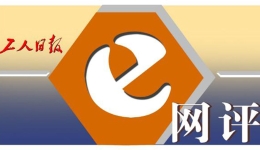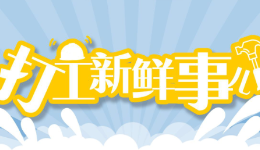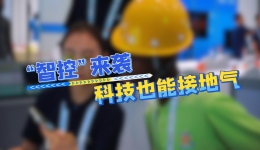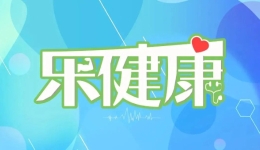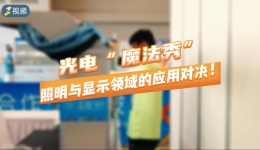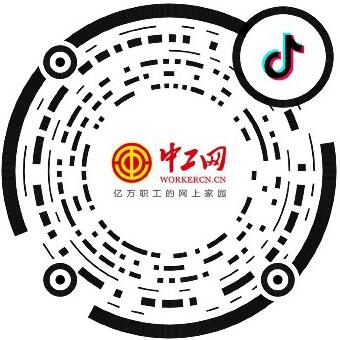Original title: Happy Health | Dizziness, Panic and Sweating... Get medical attention in time when "heat" causes these symptoms

Before the summer solstice, many places have ushered in the hot weather. Some local emergency centers have received more than 10 patients who need treatment due to heatstroke.
It is reported that since June, the number of 120 calls in Beijing has increased significantly compared with the same period last month, and there are more than 20 emergency calls related to heatstroke every day.
Heat stroke, that is, when exposed to high temperature, high humidity, and no ventilation, or after strenuous exercise, the heat balance composed of heat absorption, heat production, and heat dissipation of the human body is destroyed, and the heat accumulation of the body part or whole body exceeds the compensatory limit of temperature regulation.
Heat stroke of different degrees
As a thermostatic organism, human body temperature will fluctuate slightly in a day. It is lowest in the morning, highest in the afternoon or evening, but it will always remain within the range of 36 ℃~37 ℃. When the body temperature is too high, many problems will arise.
Heat stroke includes threatened heat stroke, mild heat stroke and severe heat stroke.
Precursory heatstroke: symptoms include fatigue, dizziness, thirst, sweating, etc. The patient can return to normal in a short time after leaving the high temperature environment and entering the cool and ventilated environment.
Mild heatstroke: symptoms include nausea, vomiting, palpitations, flushing or pallor, inattention, uncoordinated movements, and uncontrolled temperature rise.
Severe heatstroke: according to the severity, it can be divided into heat cramp, heat exhaustion and heat stroke. The main symptoms are dizziness, headache, nausea, vomiting and muscle cramps, which gradually develop into lethargy, coma, accompanied by high fever, and even endanger life safety in serious cases.
The mortality rate of heat stroke is high, which is mainly manifested by the obvious increase of body temperature, a large amount of sweat at the beginning, followed by dry hot skin, no sweat and coma. Three hours after the onset of the disease is the golden time for rescue, which needs to be sent to the hospital immediately.
Focus on key groups
Heat stroke is generally related to human body temperature regulation function and physical activity.
Infants, the elderly, patients with chronic basic diseases, long-term bedridden patients, obese patients and other groups, with poor organ reserve ability, decreased immunity and self-protection ability, are prone to body temperature imbalance. Once in a hot, stuffy environment with poor air flow, heatstroke is prone to occur.
Athletes, firefighters, construction workers, sanitation workers, healthy young people who exercise intensely in summer, and other groups, who engage in high-intensity physical activity in high temperature and humidity environment, are prone to heatstroke due to factors such as untimely water supplement, clothing shielding and skin heat dissipation.
Treatment after heatstroke
In case of threatened heatstroke, leave the high temperature environment immediately and pay attention to water supplement. After timely measures are taken, relevant symptoms can be completely alleviated to avoid further development.
The following points should be noted in the first aid for mild heatstroke:
1. Leave the high temperature environment as soon as possible and find a cool and ventilated place to rest
2. Reduce clothing, wet skin with water, and use fans and other tools to accelerate the air circulation around patients
3. Add 0.5g salt (sodium chloride) to supplement salty drinks or 500ml water
Severe heatstroke is often accompanied by fainting and unconsciousness, so it is necessary to call the emergency number immediately and take on-site treatment while waiting. The following points should be noted in emergency treatment:
1. Get out of the high temperature environment as soon as possible, look for a cool and ventilated place, and let the patient lie flat with high feet
2. Reduce clothing, take a cold bath or cover the head, armpit, groin and other large vascular areas with wet towels
3. Keep the patient's respiratory tract unblocked
4. Patients with heat cramps or heat exhaustion can take small mouthfuls of water or electrolyte drinks
5. Send to the hospital as soon as possible
How to avoid heatstroke in summer
Adequate water intake: In hot weather, the loss of body water is accelerated, so it is necessary to maintain adequate water intake to avoid dehydration. At the same time, avoid excessive drinking or caffeinated drinks as they may aggravate dehydration.
Avoid going out in high temperature period: try to reduce outdoor activities in high temperature period, usually from noon to afternoon, to avoid excessive exposure to high temperature environment.
Choose suitable clothes: wear relaxed and breathable clothes, and choose light colored clothes and loose styles to help dissipate heat and keep your body cool.
Avoid strenuous exercise: In high temperature environment, reduce the time and intensity of strenuous exercise to avoid excessive energy consumption and body overheating.
Look for a cool environment: In hot weather, try to stay in a cool and cool indoor environment, or look for a cool place provided by air conditioning facilities.
Misunderstanding of heatstroke prevention
1. Keep the door closed
The emergency doctor reminded that staying indoors can avoid exposure to the sun, but if the indoor air circulation is poor or if you exercise hard for a long time, you may still suffer heatstroke due to heat accumulation. In particular, people with weak physique are more likely to suffer heatstroke if they stay in a stuffy and unventilated room for a long time in summer.
2. Immediately enter the air-conditioned room after heatstroke
The human body mainly relies on the skin to dissipate heat. If you enter an air-conditioned room where the air is not circulating and the temperature is too low immediately after heatstroke, it will cause the skin pores of the whole body to contract violently, hinder the normal sweating and heat dissipation of the pores, and will worsen the condition.
3. Eating cold drinks
Eating cold drinks is not a good way to prevent heatstroke. Drink more water and supplement electrolytes in hot days. High sugar drinks or alcohol will cause the body to lose more body fluids. Therefore, it is not suitable to drink a large amount of sugary carbonated drinks in hot and hot weather, nor to drink a large amount of iced drinks quickly.
Other diseases in summer
In addition to causing physiological stress related to temperature regulation, high temperature weather can also induce fever, cold, heat stroke, diarrhea and other diseases, and may aggravate the original symptoms of cardiovascular and cerebrovascular diseases because the human body is in a state of heat stress.
Hot colds: People often blow air conditioners and electric fans in order to cool down in hot weather. If they blow air conditioners or cold air when sweating, it is easy to cause colds, which is commonly known as hot colds.
Mild heat and cold may cause low fever, headache, general malaise and other symptoms. In severe cases, high fever will occur, and the fever will not subside after sweating, accompanied by headache, body laziness, fatigue, dry mouth but do not want to drink water, red and yellow urine, yellow and greasy tongue coating, and some patients will vomit or diarrhea.
If you have a fever or cold, you should rest more to ensure adequate sleep; Drink enough water to ensure 2000 ml of water every day, some of which should preferably be electrolyte drinks; Eating a balanced diet with less spicy, vitamin C can be properly supplemented. Those with mild cold symptoms can take medicine on their own, but if there is no obvious improvement or symptom aggravation after taking medicine, they should seek medical advice in time.
Heat stroke: stroke, also known as stroke, is a common cerebrovascular disease in middle-aged and elderly people. In terms of the onset season, there are two peak periods, one is the cold winter when the temperature is below 0 ℃, and the other is the midsummer when the temperature exceeds 32 ℃. Stroke occurring in hot weather, also known as heat stroke, mostly belongs to ischemic stroke.
After the hot wind, the patient is prone to dizziness and headache, accompanied by visual rotation, nausea and vomiting; All kinds of movement obstacles, such as one side of the body is weak or unable to move, holding objects is unstable, swallowing is difficult, drinking water is choking, mouth corners are skewed; Sensory disturbance, such as numbness of lips, face, tongue and limbs; There are also changes in personality, behavior and intelligence of patients.
To prevent hot stroke, attention should be paid to the control of basic diseases. Patients with hypertension, diabetes, hyperlipidemia, coronary heart disease and cerebrovascular disease history should be actively treated, take medicine on time according to the doctor's advice, monitor blood pressure, blood sugar, blood lipids, etc., and regularly assess the vascular condition; Keep a healthy lifestyle, do not smoke, do not drink too much, supplement water in time, go to bed early and get up early, do not be greedy, eat reasonably, and be calm.
Systemic lupus erythematosus: Ultraviolet rays are strong in summer. Studies have proved that ultraviolet rays are not only one of the important incentives for lupus, but also an important factor leading to lupus recurrence and aggravation. Up to 60% of lupus patients are stimulated or aggravated by sunlight.
Zeng Xiaofeng, director of the National Clinical Medical Research Center for Skin and Immune Diseases, suggested that preventing ultraviolet radiation is the most important protective measure for lupus patients, especially for patients who have had skin rashes. It is suggested that reasonable sunscreen should be carried out to avoid ultraviolet radiation on the skin, reduce skin inflammation, and reduce disease recurrence.
If the patient suddenly has a long fever, erythema, alopecia, arthritis, swelling and pain, it is recommended to go to the hospital for reexamination in time.
(Comprehensive sources: Labor Noon News, China Weather, Beijing Daily client, Beijing Disease Control, Xinhuanet, Guangming, People's Daily, China News)










